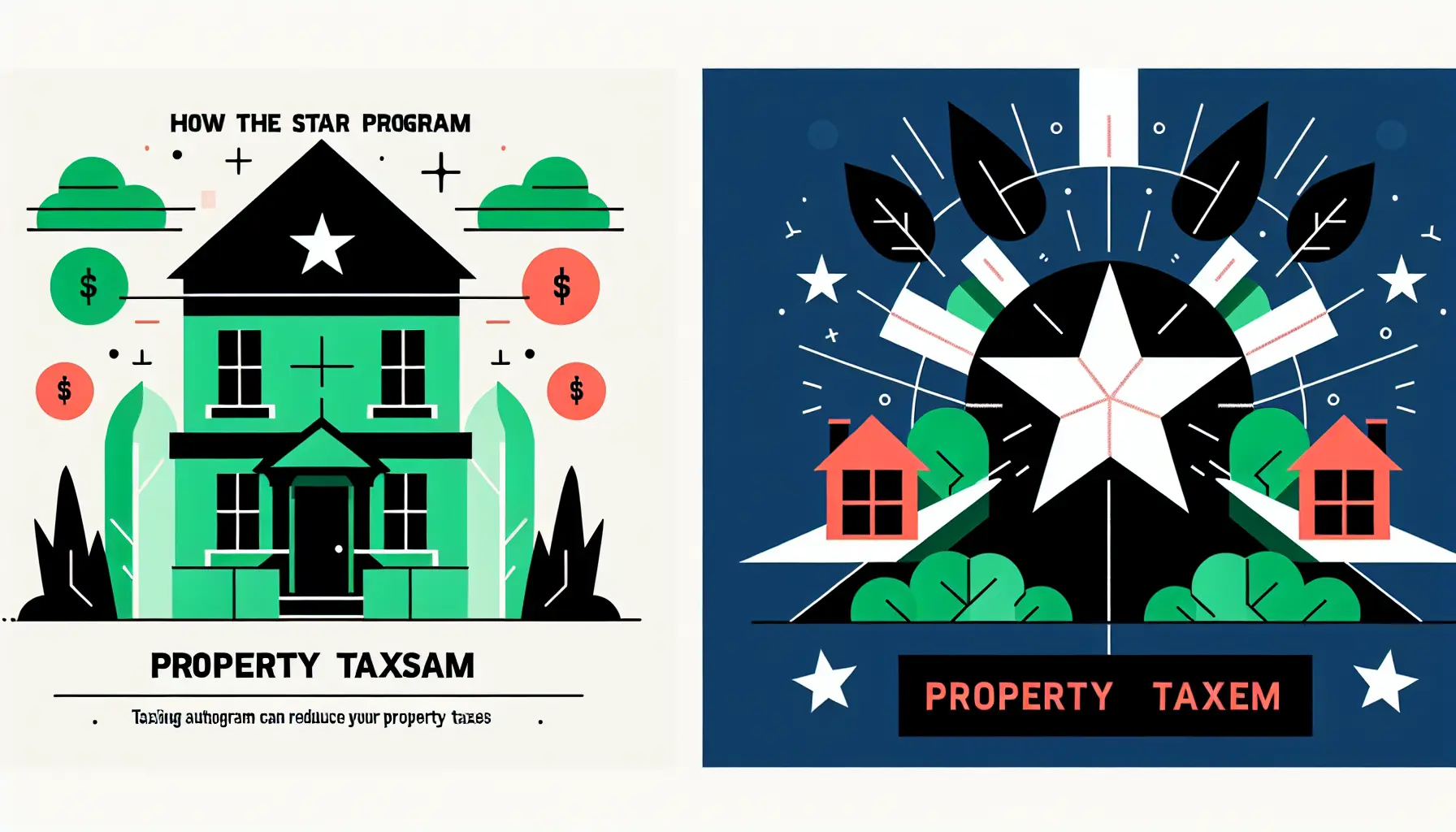We can't find the internet
Attempting to reconnect
Something went wrong!
Hang in there while we get back on track
How the STAR Program Can Reduce Your Property Taxes
by Ricklef Wohlers.
2024/09/22.
Introduction

Property taxes are a significant annual expense for homeowners, supporting essential local services such as schools, police, and fire departments. These taxes are assessed based on the value of your property, and a high assessment can result in substantial tax bills. Given their importance and impact on household budgets, many homeowners are continually looking for ways to alleviate this financial burden.
The School Tax Relief (STAR) Program offers a practical solution to help New York State residents reduce their property tax obligations. Established to assist homeowners, the STAR program provides two primary benefits: Basic STAR and Enhanced STAR. Basic STAR is available to most homeowners, while Enhanced STAR offers additional relief for seniors. By reducing the taxable value of your home, the STAR program can significantly lower your property tax bills, making home ownership more affordable.
Understanding the STAR Program
The School Tax Relief (STAR) Program, initiated by the state of New York, aims to alleviate the financial burden of school taxes on homeowners. It provides property tax relief to eligible homeowners, making homeownership more affordable. The program is designed to reduce the amount of property taxes owed on a primary residence, translating into direct savings on your tax bill.
The STAR Program essentially comes in two variants: Basic STAR and Enhanced STAR. Basic STAR is available to most homeowners who use their property as their primary residence, while Enhanced STAR is geared toward senior citizens aged 65 or older, offering even greater savings. Once you qualify and register for STAR, the amount you are eligible for is automatically deducted from your school tax bill each year.
The program works by providing a partial exemption from school property taxes, meaning the assessed value of your home is reduced before the school tax rate is applied, thereby lowering your overall tax liability. For eligible seniors under the Enhanced STAR, the benefit can be significant, providing much-needed financial relief as they often live on fixed incomes. By understanding and participating in this program, homeowners can effectively lessen the impact of school taxes on their budgets, contributing to more financial stability and potentially increasing the enjoyment of their property investment.
Benefits of the STAR Exemption
The STAR (School Tax Relief) program offers several compelling benefits for homeowners seeking to reduce their property taxes. One of the primary advantages is the direct financial savings it provides. By granting an exemption on the assessed value of eligible owner-occupied primary residences, STAR effectively lowers the amount of property taxes owed, thereby offering immediate relief to homeowners' budgets. The savings can be particularly noticeable for those on fixed incomes, such as retirees, making it easier to manage yearly expenses.
Another significant benefit is the ease of application. The STAR program has been designed with user convenience in mind, featuring a straightforward application process that can often be completed online with minimal documentation. Once a homeowner is approved, the exemption automatically renews each year, eliminating the need for annual reapplication and providing continual financial benefits without the hassle of repeated paperwork.
In the long term, the STAR exemption can have a substantial impact on overall property tax obligations. By consistently reducing the taxable assessed value of a home, the program helps mitigate the effects of rising property taxes over time. This can contribute to long-term financial stability and make homeownership more affordable in high-tax areas. Additionally, since the STAR savings can be factored into the home's value, it may also make the property more attractive to potential buyers if the homeowner decides to sell. Overall, the STAR program provides both immediate and enduring financial advantages, making it a valuable resource for eligible homeowners.
Eligibility Requirements
The STAR (School Tax Relief) Program is designed to help New York homeowners reduce their property tax burden. To be eligible, homeowners must meet specific criteria relating to the type of property, residency, and income levels. Primarily, the property must be the homeowner's primary residence. This could include single-family homes, condominiums, cooperative apartments, mobile homes, and certain farms.
There are two types of STAR benefits—Basic STAR and Enhanced STAR. For Basic STAR, the income threshold is relatively lenient; homeowners with a combined household income of $250,000 or less are eligible. In contrast, Enhanced STAR is tailored for seniors; homeowners aged 65 or older with a combined income not exceeding $93,200 can qualify for greater tax relief under this provision.
Documentation is crucial for securing STAR benefits. Applicants need to provide proof of residency, such as a driver's license or utility bill, and submit income verification documents like federal or state tax returns. For Enhanced STAR, additional documentation verifying age, such as a birth certificate, may be required. By ensuring you meet these eligibility requirements and providing the necessary documentation, you can take advantage of the STAR Program to significantly reduce your property taxes.
How to Apply for the STAR Program
Applying for the STAR Program is a straightforward process designed to help homeowners reduce their property taxes. First, determine your eligibility based on your household income and whether you qualify for the Basic or Enhanced STAR. Next, visit the New York State Department of Taxation and Finance website and locate the STAR application portal. You’ll need to log in or create an account to start your application.
Gather the required forms, including proof of residency and income documentation, such as your latest tax returns. Complete the online application by filling in your personal information and attaching the required documents. Submit your application before the deadline, which typically falls around March 1st for new applicants. To enhance your chances of a successful application, double-check all details for accuracy and ensure all required fields and attachments are correctly filled and uploaded. Keep a copy of all submitted documents for your records.